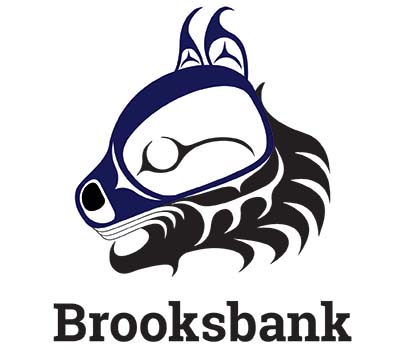Vision to Goal Setting
What is our Vision for Learning?
Traditional Acknowledgement
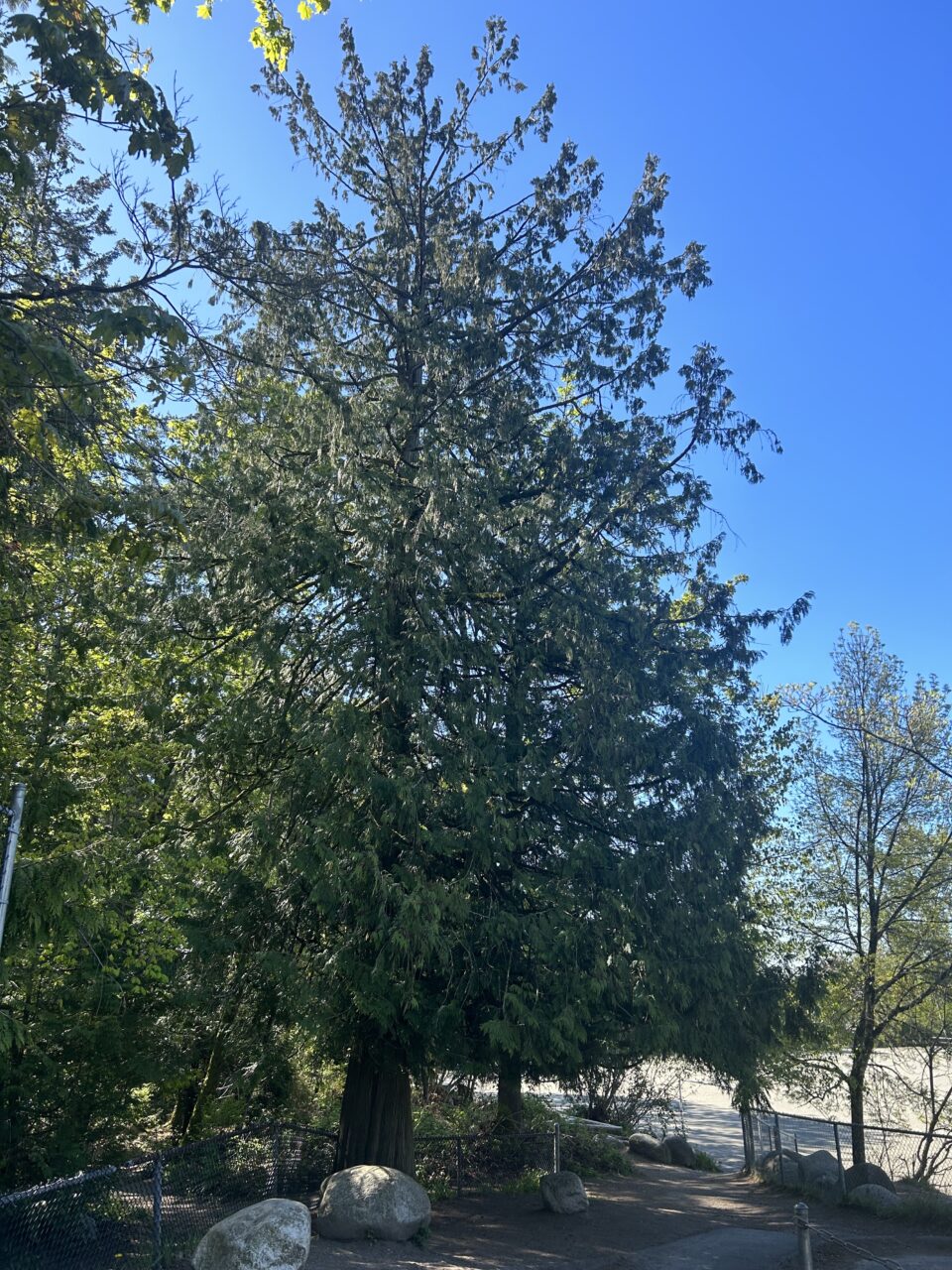
We would like to thank the Coast Salish people, specifically the Tsleil-Waututh Nation and Squamish Nation whose traditional territory North Vancouver School District resides on. We value the opportunity to learn, live, and share educational experiences on this traditional territory.
Vision for Learning
At Brooksbank we value compassion in our thoughts, words and actions. We are situated in a greenbelt area of the North Shore. Our 400+ students and staff are fortunate to be supported by a amazing community of parents and neighbours. Staff at Brooksbank strive to provide a differentiated and inclusive learning community with an emphasis on relationships. We believe that the social emotional development of each student can be fostered through a respectful, safe and nurturing environment. Every learner is encouraged to participate in their learning and the school community with personal responsibility and with an emphasis on empathy.
Together we are as strong as a CEDAR
At Brooksbank, together we are as strong as a CEDAR, is a set of values that guide our behaviour and actions to ensure that all members of our school community feel connected, safe and valued. Following the Indigenous Ways of Knowing, we chose the CEDAR for its deep connection to the land and the strength of its roots that allows it to grow and thrive over time.
C-Compassion- in our thoughts and actions
E-Empathy- practising empathy daily
D-Determination- resilient in our way of being
A-Actions- walking the talk
R-Respect- for everyone
At Brooksbank, we strive to create a safe and inclusive learning environment through intentional and targeted teaching of social emotional learning and self regulation strategies. The creation of the CEDAR acronym is the basis of our school-wide SEL program. We plan to launch the program in the late stages of the 2023/2024 school year.
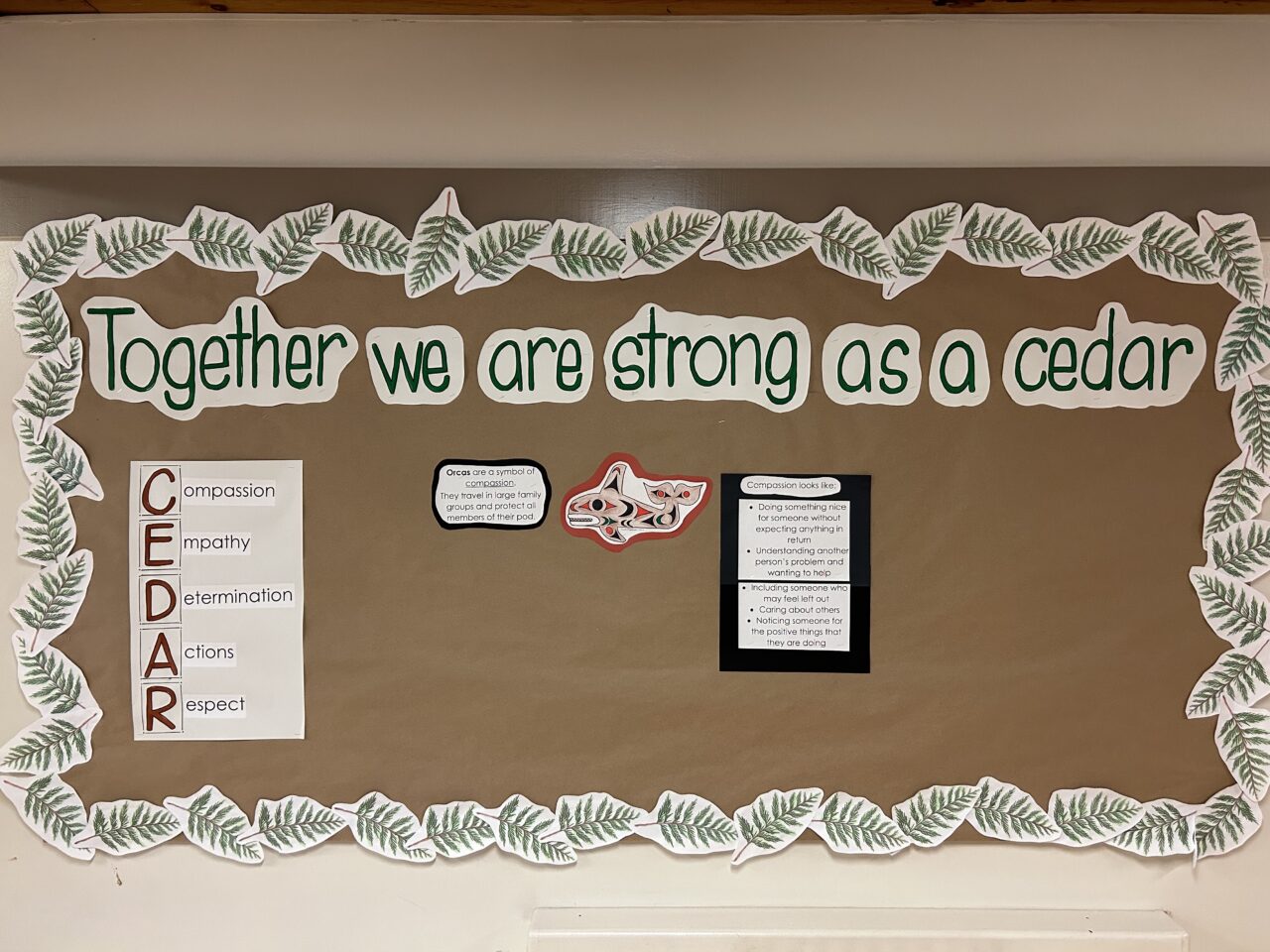
Planning & Implementation
What is our Action Plan?
Social-Emotional Goal
School Goal #1
Social Emotional Learning-To foster a community of belonging, resilience and healthy relationships.
2019-present Brooksbank is using the Second Step Program from Kindergarten to Grade 7. Second Step is a program rooted in research based social-emotional learning (SEL) that helps schools intentionally teach skills for social and academic success. A holistic approach, Second Step supports a community of empathy by providing staff, students and families with strategies and tools to achieve social-emotional growth.
2024- Together We Are Strong As A Cedar
C- Compassion
E- Empathy
D- Determination
A- Actions
R- Respect
We have created a PBIS team to develop, organize and roll out the Together We Are Strong As A CEDAR. This is a school wide initiative to highlight positive behaviours that are demonstrated throughout the school. Aligned with indigenous animal symbols, students will be given a sticker when they are “caught” demonstrating one of the CEDAR actions. We will collect, highlight and celebrate our school wide successes.
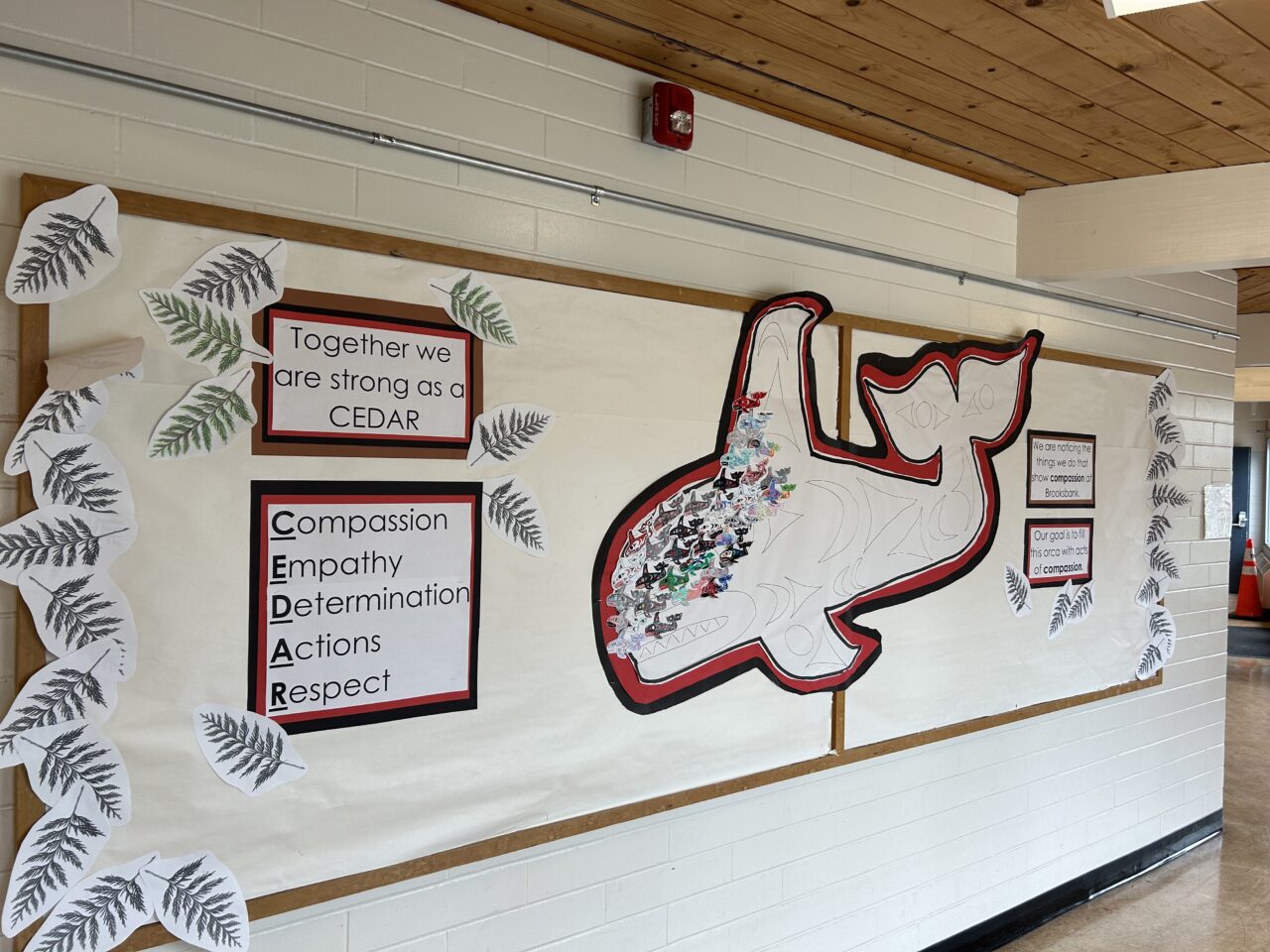
Academic Goal
School Goal #2
Written expression- To build writing strategies with all of our students.
2023-present At Brookbank we are using the writing strategies of Adrienne Gear; Powerful Writing Strategies. The writing program focuses on “Brain Pocket Writing” which helps students understand different types of writing in a year long program. We are implementing the program Kindergarten-Grade 7. We began at the end of June 2023 with a professional day focus on writing, from this day the Adrienne Gear program was chosen. We have since engaged in several writing focus workshops highlighting components of the program. In October of 2023, we conducted a school-wide write, followed by a professional day dedicated to reviewing our strengths and stretches in writing. We have attended 4, 2 hour long sessions to further examine the program. We will be conducting a follow up school-wide write in May to re-evaluate our progress and establish our next steps.
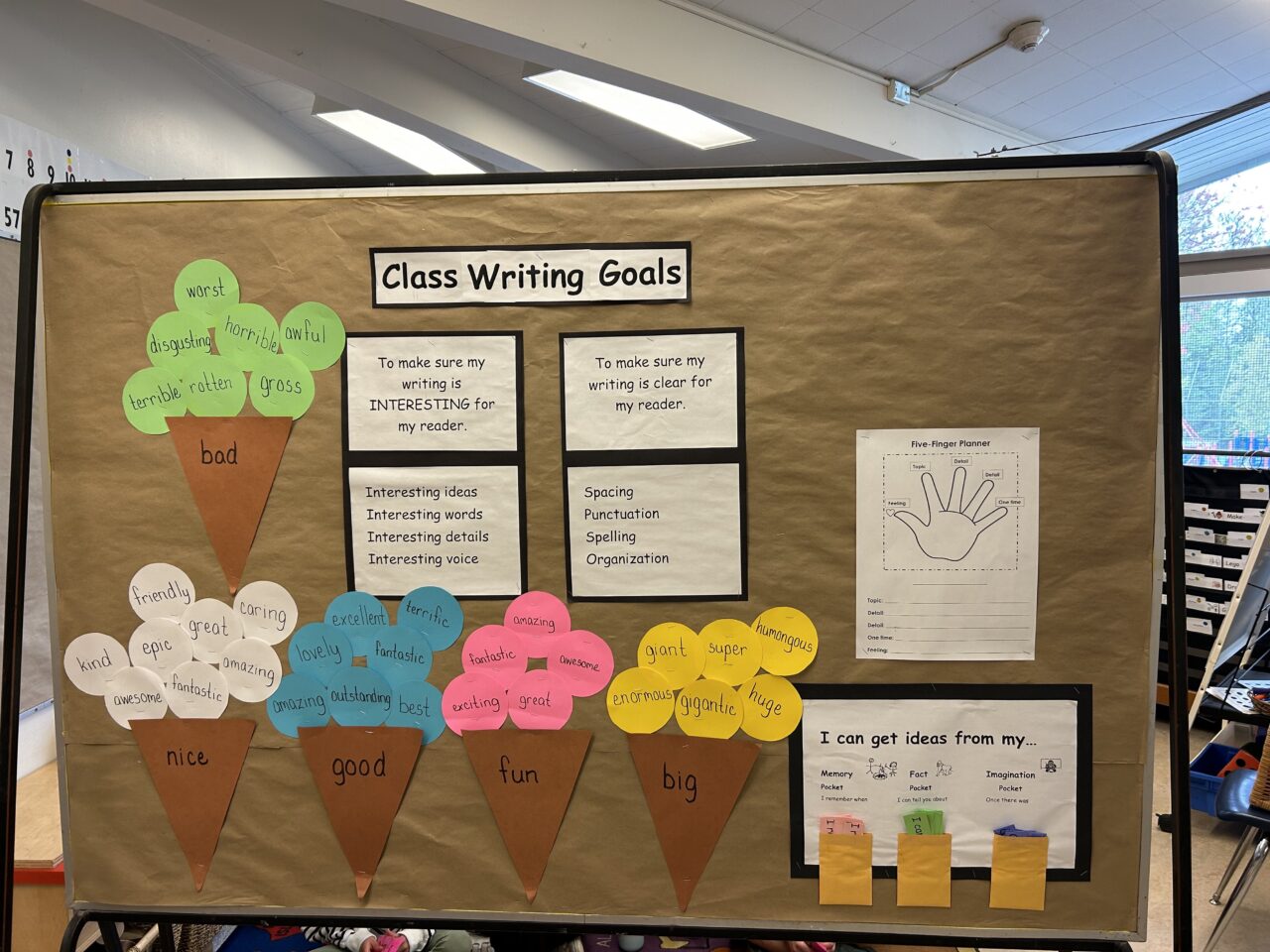
Monitor Evaluate & Adapt
What are our Indicators of Progress?
Staff Commitment to Learning
At Brooksbank, staff are continually learning and growing their skills in order to improve the overall educational opportunities and programming for our students. Embedded in our daily practice, is a commitment to share Indigenous Ways of Knowing with students and the community. In addition to our 2 formal goals, Brooksbank staff have identified math as an area of future focus. We are eager to learn new and captivating ways to engage our learners in mathematics. Learning together with intention on Professional Development Days, Staff Meetings and Collaboration days is an essential way for staff to continuously assess progress and make necessary adjustments to ensure that we are continuing to grow as a Vibrant Learning Community.
WHAT ARE OUR INDICATORS OF PROGRESS?
Our indicators are:
-staff, students and parents will begin to use shared language and strategies regarding Social Emotional Learning
-tracking of report card and FSA data for Grade 4 and Grade 7
-tracking of MDI results regarding a sense of belonging and social emotional learning
-tracking of Student Learning Survey data
Reflection
We continuously reflect upon how our School Plan represents our values and stretches while informing our practice. Deepening this understanding allows us to focus our energies with activities to advance our goals. We continue to consider the connection between our goals and our practice in the following areas:
-learning resources and funding choices
-professional development, collaboration activities, team meeting activities
-curriculum and instruction
-communication and engagement with our school community
Communicating Progress
How do we Communicate our Progress?
For Staff
Staff will be kept up to date at monthly Staff and C.U.P.E. Meetings, as well through staff email and the Week at a Glance for weekly events that support the our goals.
For the School Community
The Brooksbank community will be able to monitor our progress through this website, as well as reports at the monthly PAC Meeting, and monthly newsletters that are emailed to families, but also posted on the school’s website.
Methods of communication will include:
informal updates to parents
formal report card updates three times per year
conferences
Newsletters
open house/meet the teacher events,
special presentations: Band and Strings, music, concerts, performances
PAC bulletins
Latest Progress & Updates
School plan was updated on March of 2024 to reflect the implementation of our social emotional and writing goals.

